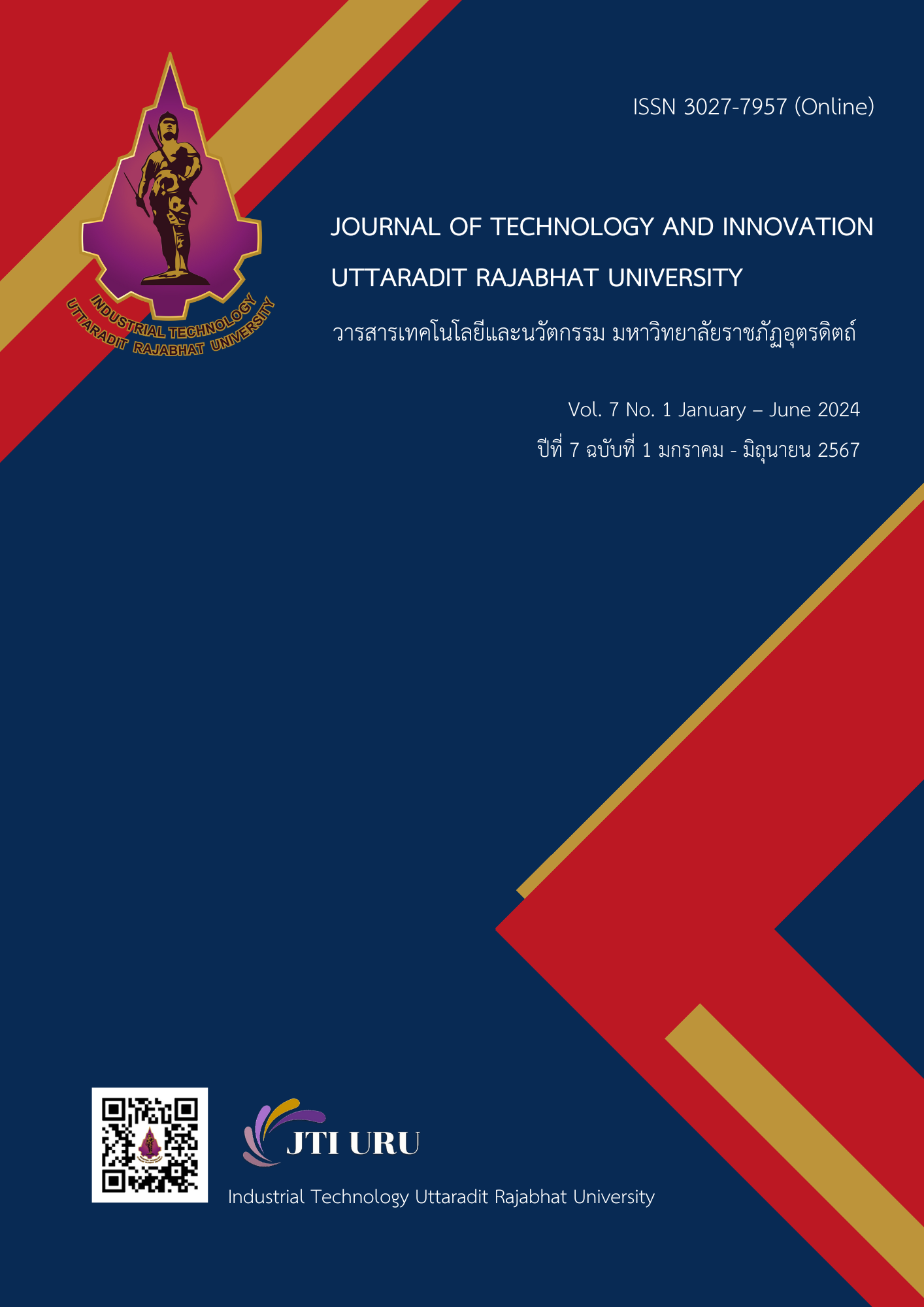COMMUNITY ENTERPRISE HERBAL PRODUCT DEVELOPMENT BAN KO SOPHI, NONG NANG NUAN SUBDISTRICT, NONG CHANG DISTRICT, UTHAI THANI PROVINCE
Main Article Content
Abstract
This research utilizes a survey method to examine and guide the development of community enterprise groups and the production of herbal products through a seminar-style learning activity. The study focused on Ban Ko Sophi, Nong Khaem Subdistrict, Nong District, Uthai Thani Province, where 1,213 rai of land was found to be highly suitable for rice farming. In addition, households in this area grow various medicinal plants, which are used to produce a significant variety of herbal products, numbering approximately 20. The problems encountered include (1) A lack of knowledge in product processing and the use of advanced technological equipment. (2)Insufficient financial support from external agencies, which may affect the group’s sustainability. (3)A shortage of tools, materials, equipment, and raw materials needed to support product production. (4) An absence of markets to support the products produced, with marketing channels being quite limited.
The research team, leaders, and group members have collaborated to develop herbal products for the Ban Ko Sophi Enterprise Group. This initiative has enabled members of the enterprise group to increase their income through product sales, fostering positive changes in the community. It has also encouraged the use of local resources to generate additional income from supplementary occupations. Members of the household enterprise group have utilized herbs available in their households to expand their production and enhance their understanding of the benefits of existing herbs within the community. Moreover, the sustainability achieved within the community has been shared as a model for other communities to follow.
Article Details

This work is licensed under a Creative Commons Attribution-NonCommercial-NoDerivatives 4.0 International License.
References
กรมพัฒนาการแพทย์แผนไทยและการแพทย์ทางเลือก. (2560). แผนแม่บทแห่งชาติว่าด้วยการพัฒนาสมุนไพร ฉบับที่ 1 พ.ศ. 2560-2564. กรุงเทพฯ: ทีเอส อินเตอร์พริ้นท์.
คำแสน ประเสริฐสุข. (2555). การผลิตและการตลาดลูกประคบสมุนไพร: กรณีศึกษา กลุ่มแพทย์แผนไทยตำบลนาพิน อำเภอตระการพืชผล จังหวัดอุบลราชธานี. (วิทยานิพนธ์ปริญญามหาบัณฑิต). มหาวิทยาลัยราชภัฏอุบลราชธานี.
ประหยัด มะโนพะเส้า. (2552). แนวทางพัฒนาวิสาหกิจชุมชนบ้านหนองยางไคล ตำบลทาทุ่งหลวง อำเภอ
แม่ทา จังหวัดลำพูน. กรุงเทพฯ: กรมส่งเสริมการเกษตร.
มาลี บรรจบ และดรุณ เพ็ชรพลาย. (2538). แนวทางการผลิตวัตถุดิบสมุนไพร. กรุงเทพฯ: กองวิจัยและพัฒนาสมุนไพร กรมวิทยาศาสตร์การแพทย์.
รุ่งทิวา กองสอง. (2551). ความหลากหลายชนิดของพืชสมุนไพรและการใช้ประโยชน์ของชุมชน : กรณีศึกษาป่าชุมชนโคกหินลาด อำเภอเมืองจังหวัดมหาสารคาม. มหาสารคาม: มหาวิทยาลัยมหาสารคาม.
สำนักงานนโยบายและยุทธศาสตร์การค้า กระทรวงพาณิชย์. (2560). เส้นทางเกษตรไทยก้าว ต่อไปสู่เกษตรมูลค่าเพิ่ม. TPSO Journal, 7(66), 1-12.
สุมาลี สันติพลวุฒิ, รสดา เวษฎาพันธุ์, และเกียรติชัย เวษฎาพันธุ์. (2559). โครงการยกระดับผู้ประกอบการ OTOP ที่มีศักยภาพก้าวไปสู่ SMEs กิจกรรมดำเนินการตามแผนการพัฒนาวิสาหกิจชุมชน : กรณีวิสาหกิจชุมชนเครื่องประดับแฟชั่น จังหวัดนนทบุรี. วารสารวิชาการศิลปศาสตร์ประยุกต์, 9(2),
-14.
เสรี พงศ์พิศ และสุภาส จันทร์หงส์. (2548). ข้อควรรู้เกี่ยวกับวิสาหกิจชุมชน. กรุงเทพฯ: กรมส่งเสริมการเกษตร.
Department of industrial Promotion. (2016). Industry trends and market size of herbal processing business. Retrieved from https://bsc.dip.go.th/th/category/quality-control/qs

